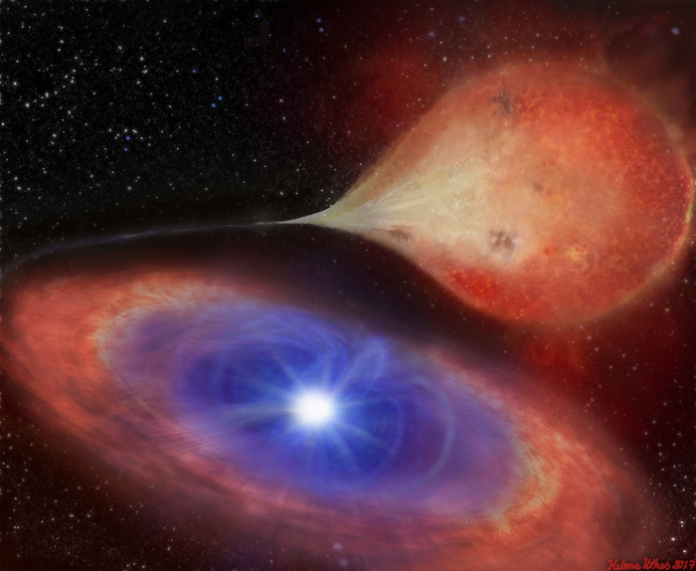
For the first time, scientists have been able to witness a white dwarf “switching on and off” via a NASA satellite
White dwarfs are what most stars become after they have burned off the hydrogen that fuels them. They are approximately the size of the Earth, but have a mass closer to that of the Sun.
So, what did the team see?
The white dwarf observed by the team is known to feeding from an orbiting companion star – almost like a vampire. The astronomers saw the white dwarf lose brightness in thirty minutes. This is uncommonly short – the team are used to this process taking a period of several days or even months.
The brightness of an accreting white dwarf is affected by the amount of surrounding material it feeds on so the researchers say something is interfering with its food supply.
The research was funded in the UK by Durham University.
The research team also included the Italian National Institute for Astrophysics, the South African Astronomical Observatory, the University of Cape Town and the University of the Free State, both also South Africa, Radboud University, The Netherlands, the University of Southampton, UK, and the University of Notre Dame, USA.
Observation is “extraordinary”
Lead author Dr Simone Scaringi, in the Centre for Extragalactic Astronomy, at Durham University, UK, said: “The brightness variations seen in accreting white dwarfs are generally relatively slow, occurring on timescales of days to months.
“To see the brightness of TW Pictoris plummet in 30 minutes is in itself extraordinary as it has never been seen in other accreting white dwarfs and is totally unexpected from our understanding of how these systems are supposed to feed through the accretion disc. It appears to be switching on and off.
“This really is a previously unrecognised phenomenon and because we can draw comparisons with similar behaviour in the much smaller neutron stars it could be an important step in helping us to better understand the process of how other accreting objects feed on the material that surrounds them and the important role of magnetic fields in this process.”










